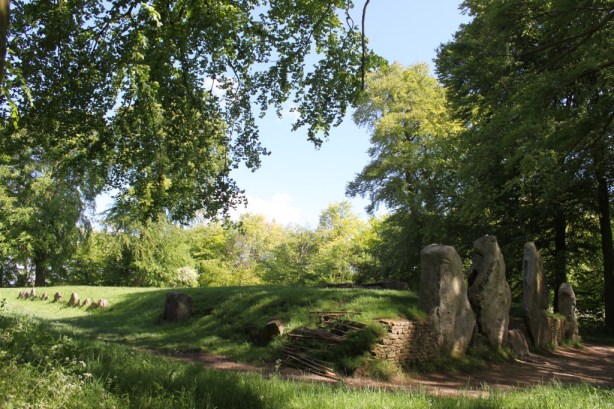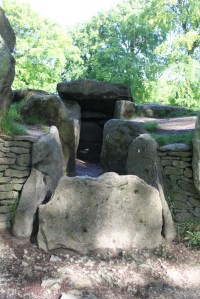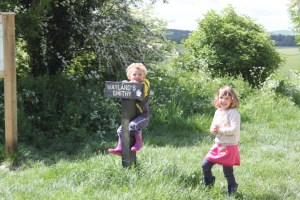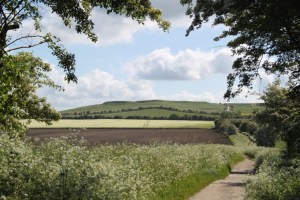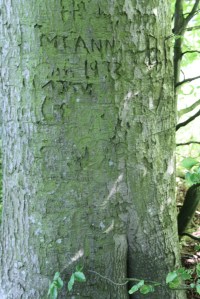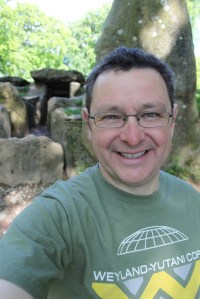Re-posted from Archaeodeath.
Recently I presented a keynote at a conference on the Subterranean in the Medieval World conference at the University of York, outlining my preliminary thoughts on the Past in its Place Strand B case study: Wayland’s Smithy.
Only subsequent to this conference did I get the opportunity to revisit this Neolithic monument of the 36th and 35th centuries BC. I went there to take photographs of the monument and also to think through some of my ideas about the site’s form and its location.
Getting to Wayland’s Smithy involved a 1.4 mile walk from the car park along the historic Ridgeway path. This is a completely different and benign experience to my memories: closed to motor vehicles and carefully managed, this stretch of the Ridgeway is now a pleasant walking and cycling path. My kids took inexplicable pleasure in attacking the heritage sign boards en route, exploring puddles and meeting a snail, as well as the occasional walkers and cyclists to passed by.
The aura of visiting Wayland’s Smithy is difficult to dispel, even if it a create of a recent plantation of beech trees. The trees themselves are the focus of a long-standing graffiti tradition, creating a strange memorial field around the Neolithic tomb. Also, neo-Pagans visit the site and leave deposits within the chambers.
As with so many ancient monuments, it is not only the sacred grove-like stand of trees that is a creation of recent aesthetics rather than a preservation from the ancient past. Wayland’s Smithy is a multi-phase prehistoric monument; what is seen today is the remains of Wayland’s Smithy II. Still, much of how the tomb looks now is a post-excavation interpretation and recreation of the 1960s excavations. Consequently, it is more difficult to think back to how it may have appeared in the Anglo-Saxon period when its association with Weland was first coined.
Having said that, it must be said that parts of the stone chamber was a feature extant and intact prior to excavation, as revealed in antiquarian images from the 17th and 19th centuries. It may have been this stone box with partly intact lintel which inspired the sense that this was a dwelling or workshop as much as a tomb.
The ‘hidden bones’ component of my title related to the point that, whilst we ‘know’ as archaeologists that this was a site with a funerary component in the Neolithic, I am still unsure if Anglo-Saxon people necessarily knew and engaged with this site for this reason and with knowledge that this was a funerary site first and foremost (if indeed it ever was funerary first and foremost). Might ancient bones have been found at the site by digging, or was it the stones that inspired the legendary association with Weland….?
I couldn’t resist going in my newly purchased Weyland Yutani t-shirt and taking a selfie… Self-indulgent and nerdy I know but we have to amuse ourselves occasionally don’t we?

